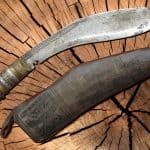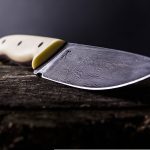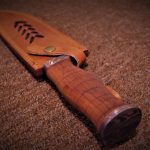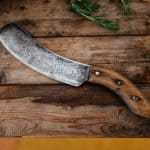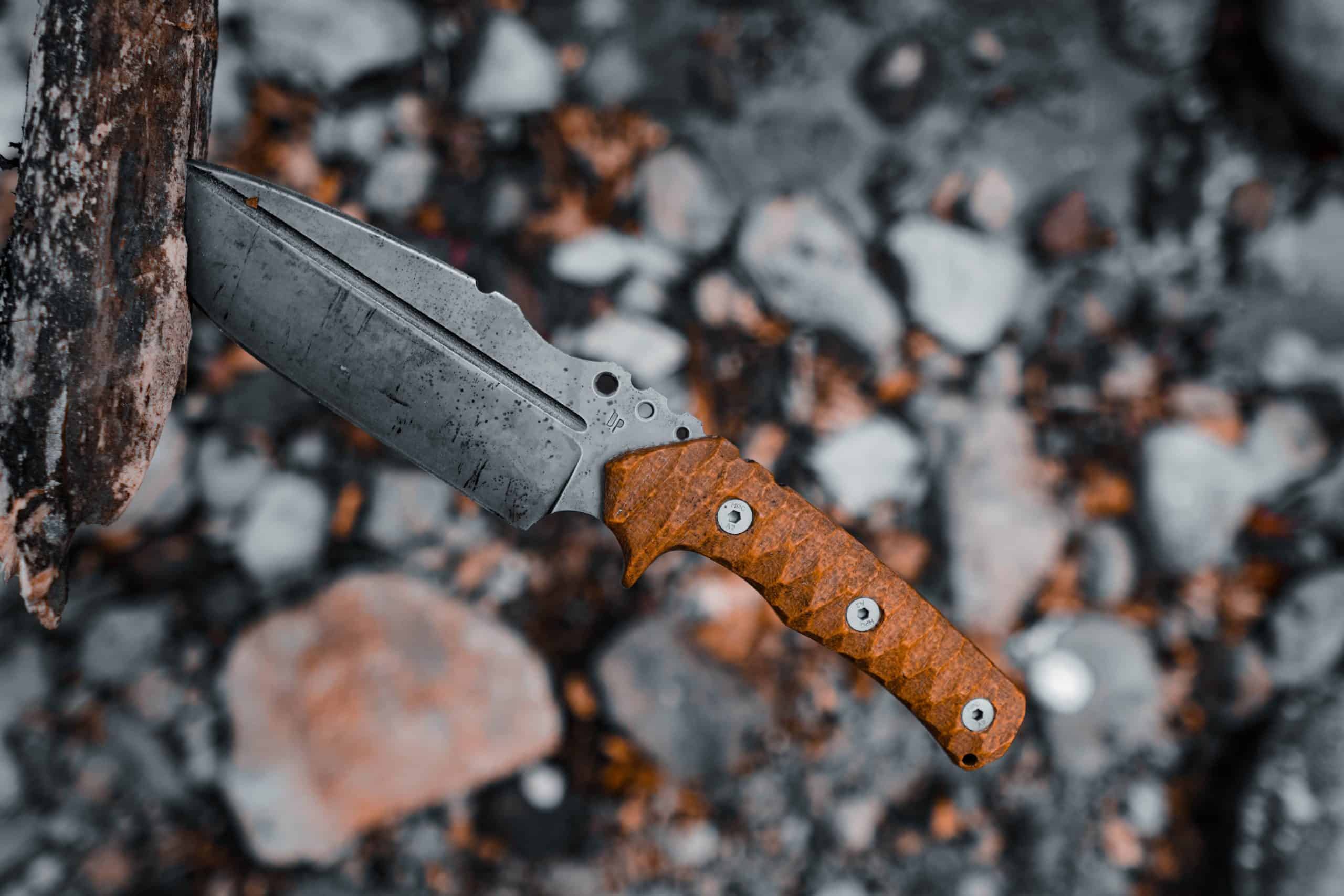
Introduction
Knife sharpening is the process of using a sharpening tool to file away material from a knife’s blade, usually made of either steel or ceramic. A leather strop is a specific type of tool used to sharpen blades by rubbing them against a flat surface, such as leather. The abrasive properties of the leather help abrade away small pieces of the metal without having to use excess strength or vigorous effort.
The main benefit of using a leather strop for sharpening knives is its precision and accuracy. Unlike more traditional methods, such as grinding wheels and stones, stropping helps maintain the exact shape and angle of the blade ensuring consistent results in each honing session which can greatly improve the quality of your cutting tasks. It also allows you to work with much lesser force than with many other sharpening methods, meaning it’s easier on both your tools and your hands. Moreover leather strops require minimal maintenance, providing maximum reliability and longevity over time if properly taken care of.
Additionally strops are typically much less expensive than their electric grinders counterparts. This means that you don’t have to worry about running out of power or spending money on additional accessories when you start sharpening your knives yourself instead of having someone professionally take care it for you. Not only this but leather strops can be used more discreetly as they don’t produce any sparks or emit loud noises when being used thus making them ideal for home use during times when it’s necessary to stay as quiet as possible while still giving excellent results.
Preparation
1. Gather the materials you need before beginning knife sharpening – a leather strop, polishing compound and your knife. It is important to stay organized and make sure everything is within reach when you are ready to begin sharpening.
2. Clean your knife blade with a piece of cloth; remove any rust or debris that has built up over time on the blade, as this will interfere with the process.
3. Put your polishing compound on the strop; if using a bar of compound, use a light circular motion while rubbing it against the strop to ensure even coverage.
4. Place the heel (the thicker part) of the blade onto the strop using light pressure, then draw it across slowly in one long motion towards yourself, taking care to keep all parts of the blade touching the leather. Repeat at least 5-10 times, flipping and turning your blade in between strokes to sharpen both sides evenly.
5. Flip your blade and repeat step 4 on the opposite side of your blade, applying more polish compound as needed before returning to sharpening until you have achieved desired results.
6. Finally, once you are satisfied with your knife’s edge, wipe off any excess polish from both sides of your knife, then use a piece of clean cloth to buff out any remaining polishing compounds from both sides for extra shine!
Technique
Sharpening knives with a leather strop is a popular knife sharpening technique that has been used for centuries. It requires a bit of skill and patience but once mastered produces an incredibly sharp edge.
To strop a knife, you will need two items: a leather strop and polishing compound or honing paste. The leather strop should be firmly attached to either a table or bench so it won’t move during the process. Polishing compound or honing paste is necessary to remove small burrs on the blade’s edge and help put a final polish on the blade.
Begin stropping your knife by starting away from you. Apply light pressure while running the blade along the length of the strop in one direction only (towards you). If using polishing compound, make sure to apply some to the strop prior to beginning this process. Add more as needed until the entire surface of your blade has been stropped. When finished, finish off by stropping 10-15 times in the other direction (away from you).
The key to getting good results when sharpening knives with a leather strop is making sure each stroke across the strop is consistent in size, angle and pressure. Keep stropping until your knife meets your desired level of sharpness – usually 8-10 passes per side should do it! Once you are done make sure to thoroughly clean your knife and leather strop of any remaining metals shavings or polishing compounds before storing them away safely
Care
Before you can sharpen a knife with a leather strop, it is important to properly maintain the strop. Proper maintenance will help ensure that your leather strop performs correctly and gives you optimal results when sharpening. Here are some tips for maintaining a leather strop:
• Keep the surface of the strop clean and free from dirt, dust or other debris to make sure that it does not interfere with the sharpening process.
• Condition the leather periodically – use a natural oil such as neatsfoot oil or mink oil to replenish oils removed during use and keep the leather soft and supple.
• Do not repeatedly fold or crease your regular strop; this could cause permanent damage over time.
• Hang your strops in a cool, dry place to promote longevity. Excessive humidity or heat can cause damage to the leather fibers over time.
• Store any additional strops that are not in use flat so they retain their shape over time.
• Inspect your leather strop regularly – look for any signs of wear, tear, cracking or fading. If these issues start to show up, replace them quickly so they don’t affect your sharpening results.
Aftercare
A leather strop is an effective tool for sharpening a knife quickly. However, it’s important to know how to ensure that the blade remains sharp once it has been honed on the strop. After every use of the strop, be sure to clean and lubricate it with a light oil such as mineral oil so that it does not become dry. After cleaning and lubricating, store the strop in a dry place out of direct sunlight.
It is also important to practice good maintenance in order to keep the edge of your knives sharp between uses. Regularly oiling or waxing your knives will help maintain their sharpness, while using harsher compounds or abrasives can damage their edge and reduce their effectiveness over time. Additionally, avoid performing any overly aggressive movements when cutting with a knife that has been recently sharpened; this can detract from its effectiveness rapidly. Finally, make sure to always store your knives properly—flat on a soft surface at room temperature—to prevent them from becoming inadvertently dulled by movement during storage.
Shopping List
-Sharpening stone: A sharpening stone, preferably one with a medium or fine grit rating, is used to sharpen knives prior to using the leather strop.
-Leather strop: This is where the main knife sharpening action happens. Select a quality grade leather strop for your sharpening needs.
-Lapping compound: Lapping compound is a specially designed abrasive paste that helps to refine and polish the blade. Apply this after sharpening on the leather strop.
-Tape: Tape such as masking tape is ideal for securing the leather strop onto a solid surface like a worktop or bench so that it stays in place while you work on it.
-Sandpaper: You will need an assortment of different grits of sandpaper in order to remove burrs and create a smooth finish on your blade prior to honing with the leather strop.
-Rag/cloth: Have a few cleaning rags available when sharpening your blades, not only for wiping off the knife but also for applying lapping compound during stropping.
-Screwdriver (optional): If you are using a hanging leather stropping belt, then a small screwdriver may be needed to adjust it properly and keep it tight around its mount point
Conclusion
A knife sharpening leather strop is a great way to keep your knives sharp and in top condition. Not only is it far less expensive than professional services or buying new blades, but it also provides the perfect finish for a good edge. Whether you prefer a traditional stone-carved look or the modern honing method of honing steel blades, using a strop will ensure that your blade retains its original shape and continues to perform as intended. The process is simple to learn as well, making it an ideal choice for those who want an easy option for maintaining their favorite tools.
The cost associated with purchasing a knife sharpening leather strop may appear expensive at first, however, the benefits far outweigh the cost in the long run. After all, investing upfront will save you from constantly having to buy new blades due to dullness. Additionally, the stropping process helps preserve your blade’s integrity by giving it an even finish and protecting it from unnecessary wear and tear over time. Thus, with proper maintenance and quality care of your knife or other tools, you can count on them to continue performing properly with minimal intervention. All in all, using a leather strop is an effective way to maintain your blades so that they retain their peak performance without frequent replacement of blades or costly sharpening services.








